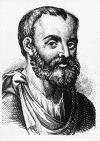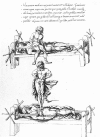Historical overview of spinal deformities in ancient Greece
- PMID: 19243609
- PMCID: PMC2654856
- DOI: 10.1186/1748-7161-4-6
Historical overview of spinal deformities in ancient Greece
Abstract
Little is known about the history of spinal deformities in ancient Greece. The present study summarizes what we know today for diagnosis and management of spinal deformities in ancient Greece, mainly from the medical treatises of Hippocrates and Galen. Hippocrates, through accurate observation and logical reasoning was led to accurate conclusions firstly for the structure of the spine and secondly for its diseases. He introduced the terms kyphosis and scoliosis and wrote in depth about diagnosis and treatment of kyphosis and less about scoliosis. The innovation of the board, the application of axial traction and even the principle of trans-abdominal correction for correction of spinal deformities have their origin in Hippocrates. Galen, who lived nearly five centuries later impressively described scoliosis, lordosis and kyphosis, provided aetiologic implications and used the same principles with Hippocrates for their management, while his studies influenced medical practice on spinal deformities for more than 1500 years.
Figures























References
-
- Naderi S, Andalkar N, Benzel EC. History of spine biomechanics: part I- the pre-Greco-Roman, Greco-Roman, and medieval roots of spine biomechanics. Neurosurgery. 2007;60:382–391. - PubMed
-
- Braun GL. Kinesiology: From Aristotle to the twentieth century. Res Q. 1941;12:164–173.
LinkOut - more resources
Full Text Sources

